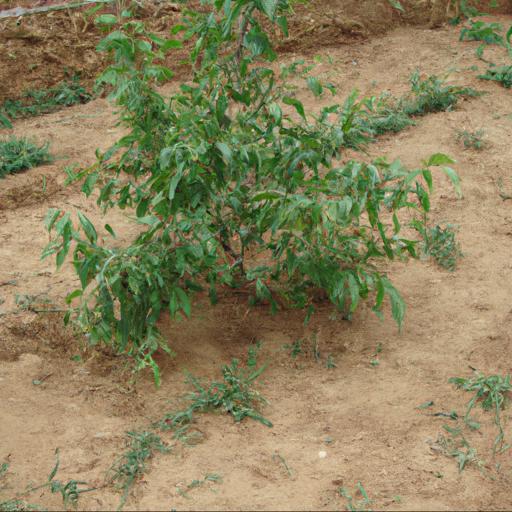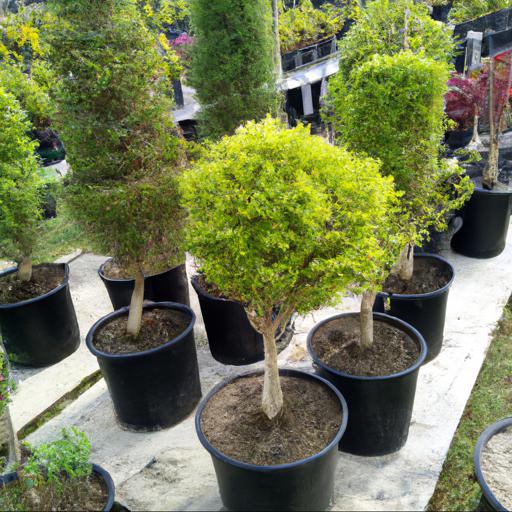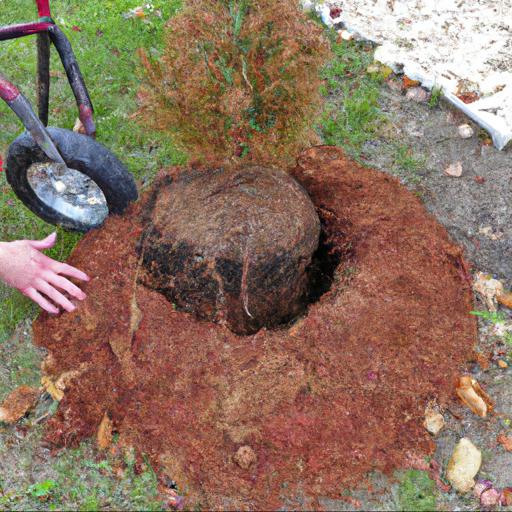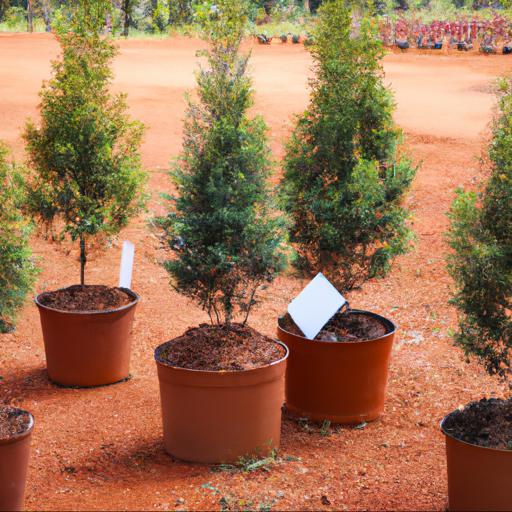Are you looking for small trees and shrubs that can thrive in heavy and clay soils? If so, you have come to the right place! In this blog, we will discuss some of the best small trees and shrubs for heavy and clay soils.
We will look at their characteristics, different varieties, and how to care for them. We will also discuss the best planting techniques and tips for successful growth.
So, if you are looking for small trees and shrubs for heavy and clay soils, then read on and learn more!
Benefits of planting small trees and shrubs in heavy and clay soils

. Growing small trees and shrubs in heavy and clay soils can provide a number of benefits for gardeners across the United Kingdom.
Clay soils can be difficult to work with, as they can become super-saturated during the wetter months and become bone dry in the summer months. However, with the right selection of trees and shrubs, gardening in clay soils can be far less troublesome. Planting small trees and shrubs can bring an array of benefits, including improved soil structure, lower water usage, and improved landscape aesthetics.
One of the main benefits of using small trees and shrubs in clay soils is improved soil structure. Clay soils are composed of small particles that tend to pack together, leading to poor porosity and water infiltration.
By planting small trees and shrubs, roots will delve deep into the soil and help break it up, creating a more porous and permeable structure, which helps with water infiltration. Furthermore, root systems of trees and shrubs take up essential nutrients from deep down in the soil, thereby allowing for a healthier and more sustainable environment for all other plants in the vicinity. Another benefit of planting small trees and shrubs in clay soils is the reduction in the amount of water required for maintenance.
Thanks to the improved soil structure, more water is able to be retained in the soil and can therefore be used by the trees and shrubs. This means that no additional watering is necessary, ensuring that water usage is kept to a minimum. This is especially beneficial in areas that experience drought or water restrictions, where water availability can be scarce.
Finally, small trees and shrubs bring aesthetic benefits to any garden space. Trees and shrubs can help to provide visual interest, structure and continuity to any space, and can also provide a welcome habitat for wildlife, with insects, birds and small animals taking advantage of the branches, leaves and fruits of the trees and shrubs.
So, if you’re looking for an attractive option for your garden, small trees and shrubs are a great choice. So, with careful selection and placement, small trees and shrubs can bring a wide range of benefits to gardens that experience heavy and clay soils. Not only do they help improve the structure and water usage of the soil, they can also be a great way to provide some visual interest and wildlife habitat in any area.
Types of small trees and shrubs suitable for heavy and clay soils

onlySmall trees and shrubs are essential for any garden, but in particularly heavy and clay soils they require more careful consideration. These types of conditions can present challenges for homeowners, particularly if they’re trying to create an appealing and diverse space.
Fortunately, there are some species of small trees and shrubs which thrive in those conditions and can be used to create a beautiful and healthy garden whatever the soil type. The Leyland Cypress, or x Cupressocyparis leylandii, is an evergreen conifer that is ideal for heavy and clay soils. This fast-growing species requires very little maintenance and has a columnar shape, making it a great choice for providing structure and a strong screening effect.
Alternatively, Camellias can provide year-round colour, as well as an impressive display of spring flowers. Camellia sasanqua is a hardy variety which is ideal for growing in less than perfect soil. For those looking for more of a flowering shrub, Fothergilla major is a great option.
This deciduous shrub offers white, bottlebrush flowers in the spring, as well as interesting colours in the foliage during the summer and fall months. It can grow to around five feet and works great as a border or hedge.
Skimmia japonica is also a great choice for heavy soils; it is an evergreen which features fragrant white flowers in the spring and summer, making it an attractive and versatile addition to any garden. Finally, Buxus sempervirens, or Boxwood, will provide strength and structure to even the most challenging of garden beds.
This hardy evergreen shrub requires very little maintenance and can survive in difficult conditions, while still providing a unique and formal look to the garden. All of these species excel in heavy and clay soils, and when combined with proper fertilization and adequate drainage they can make a great addition to any garden.
Tips for planting and caring for small trees and shrubs in heavy and clay soils

Small trees and shrubs can be a delightful addition to any property, especially when planted in heavy and clay soils. This type of soil is typically very affordable and easy to manage, so it’s no surprise that these types of soils are highly sought after.
Planting trees and shrubs in these conditions can be challenging due to their shallow root systems and the limited space for their roots to expand. To ensure healthy growth and a successful planting, there are some important tips to keep in mind. First, be sure to choose trees and shrubs that are suitable for the particular region and soil type.
Many species, such as maple, fir, and cedar, are excellent choices for heavy and clay soils as they have deeper taproots and can be tolerant of some flooding. Planting trees and shrubs with shallow root systems, such as junipers and roses, in this kind of soil can be a dangerous option as there is a possibility of root rot.
Next, it is important to properly prepare the soil for planting. This means breaking up the clay soils with a tiller or rake before adding a mix of organic matter and compost in order to help improve aeration and drainage. After planting, regular watering and mulching can help maintain a moist, healthy environment for the tree or shrub.
Fertilization can help promote growth, but be careful not to over fertilize as this can damage the root system. Finally, it is important to choose plants that are disease and pest resistant, as heavy and clay soils are prone to fungal and bacterial infections.
Pruning and pruning techniques can also help encourage healthy growth as well as maintaining the overall shape and size of the trees or shrubs. With proper care and maintenance, small trees and shrubs planted in clay and heavy soils can thrive and provide years of beauty and enjoyment.
Our video recommendation
Conclusion
Small trees and shrubs can be a great addition to heavy and clay soils. These plants, such as boxwood, yew, rhododendron, and juniper, are hardy and can thrive in difficult soil conditions.
With proper care and maintenance, these plants can provide a beautiful and low-maintenance addition to any garden.
FAQ
What are the best small trees and shrubs for heavy and clay soils?
The best small trees and shrubs for heavy and clay soils are Japanese maple, dogwood, boxwood, rhododendron, azalea, and hydrangea.
What are the benefits of planting small trees and shrubs in heavy and clay soils?
The benefits of planting small trees and shrubs in heavy and clay soils are that they can help to improve the soil structure, reduce erosion, and increase water infiltration and retention. Additionally, they can provide habitat for wildlife, create a more aesthetically pleasing landscape, and provide shade and wind protection.
What are the most common small trees and shrubs for heavy and clay soils?
The most common small trees and shrubs for heavy and clay soils are Japanese maple, boxwood, yew, barberry, rhododendron, and azalea.
How can I prepare the soil for planting small trees and shrubs in heavy and clay soils?
To prepare the soil for planting small trees and shrubs in heavy and clay soils, you should mix in organic matter such as compost, peat moss, or aged manure to help break up the clay and improve drainage. You should also add some sand to the soil to help with drainage and aeration. Finally, you should till the soil to a depth of 8-12 inches to ensure that the roots of the trees and shrubs have enough space to grow.
What are the best planting techniques for small trees and shrubs in heavy and clay soils?
The best planting techniques for small trees and shrubs in heavy and clay soils include digging a wide, shallow hole, adding organic matter such as compost or aged manure to the soil, and mulching around the base of the plant. Additionally, it is important to water the plants deeply and regularly to help break up the clay soil and encourage root growth.
Are there any special care requirements for small trees and shrubs in heavy and clay soils?
Yes, there are special care requirements for small trees and shrubs in heavy and clay soils. These include adding organic matter to the soil to improve drainage, avoiding over-watering, and mulching to help retain moisture. Additionally, it is important to fertilize regularly and prune to maintain a healthy shape.

